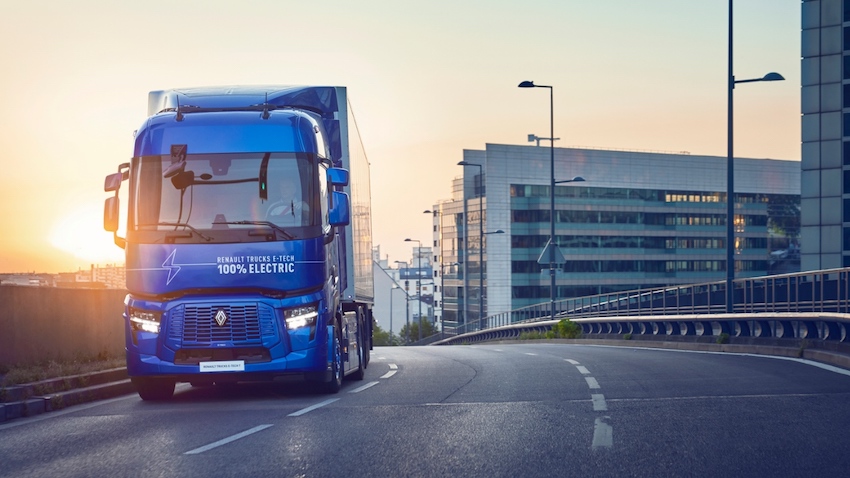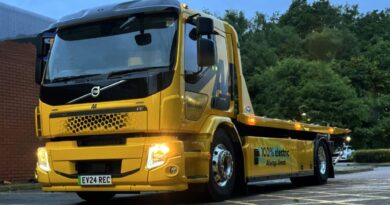GRIDSERVE to deliver EV charging network for electric HGVs
GRIDSERVE is leading a government-backed consortium to help decarbonise the UK’s road freight sector under a project named Electric Freightway.
Electric Freightway, or the ‘Zero Emission HGV and Infrastructure Demonstrator programme’ as per the Department for Transport, comprises 33 Consortium Partner and Member companies as well as the utilisation of a 140+ strong fleet of the latest eHGVs to develop a bespoke network of EV charging infrastructure across motorway service areas, truck stops and commercial depots. This £100m+ endeavour includes £62.7m of UK government support and will run to 2030.
While transport is the UK’s largest emitting sector of greenhouse gas (GHG) emissions – accounting for 24% of total emissions in 2020 – it’s actually HGVs that carry a disproportionate share of the blame. Cars, for example, clocked up 244bn miles and accounted for 6% of transport emissions while HGVs were responsible for 19% of emissions while covering far fewer (but still massive) 17.4bn miles.
To help industry invest in the technology required to achieve the UK’s net zero targets, the government has committed to phase out combustion engine lorries by 2040, five years after sales of petrol and diesel cars are outlawed.
Within the first two years of this seven-year project, GRIDSERVE has committed to install over 200 High Power chargers across key motorway service areas and more than 10 commercial depot charging locations. It will also be deploying at least two x 1 megawatt (MW) capacity High Power chargers.
“The big issue so far has been people saying you need an electric truck to have the same 500-mile range as a diesel vehicle,” explains Toddington Harper, CEO of GRIDSERVE. “To do so, that would mean you’d need an enormous battery, which would mean you wouldn’t have the ability to transport the same amount of payload. However, that mindset changes if you’re able to charge that battery very quickly.”
“This is a seven year project, but it’s very important to get all the infrastructure in the ground and test vehicles on the road in the next two years, so we can spend those subsequent years data gathering,” added Sam Clarke, Chief Vehicle Officer of GRIDSERVE.
“While this is a new world for us all, I think we can take a lot of learnings from the car world. We know people’s behavioural patterns now, we know their dwell times and the challenges with grid connection. This stuff is a lot bigger, requires a lot more power, but ultimately its success will be based on the same principles.”






